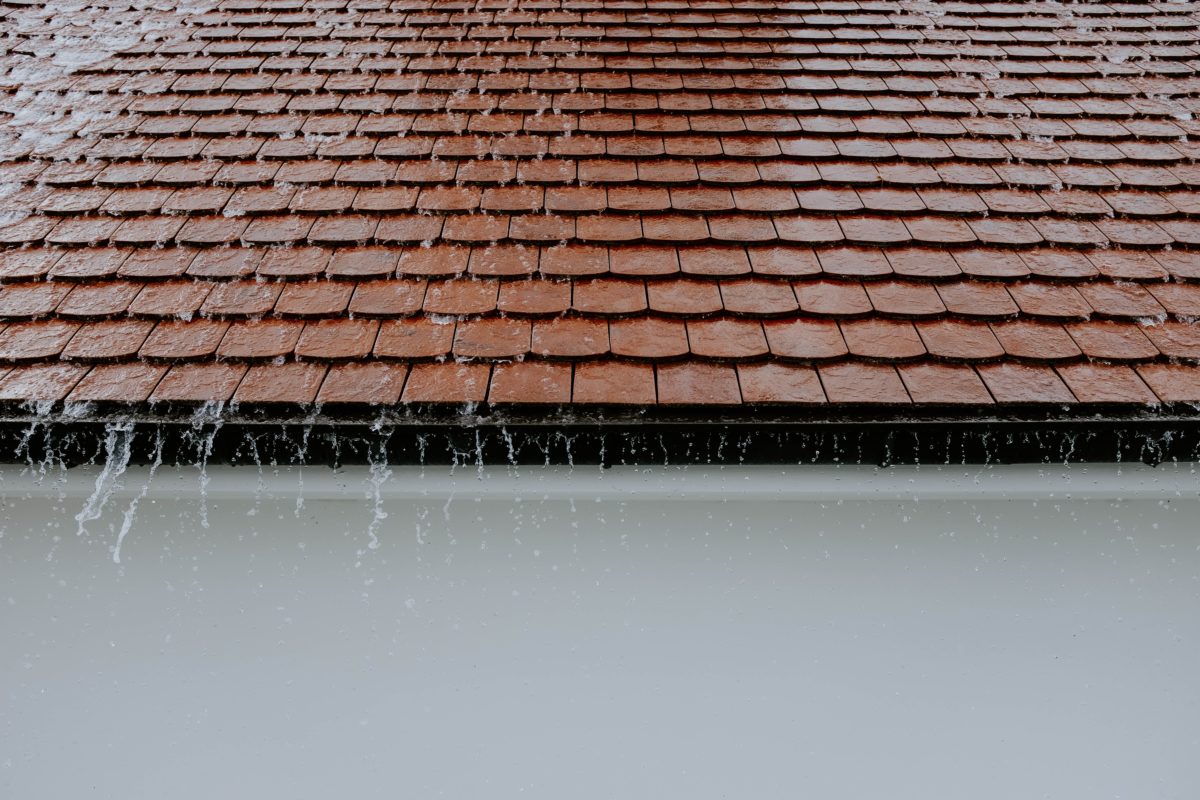Chimney safety in the rain is no joke.
The weather in California has been exceptionally rainy lately. The state has just experienced our ninth atmospheric river in a three-week succession of major winter storms, leading to flooding, landslides, and hazardous conditions. For residents of the state, it’s essential to be aware of the potential effects of the rain on our homes – particularly our chimneys.
In order to ensure complete safety from potential leaks, erosion, or falling debris, there are certain areas of concern that should be checked and monitored.
How Safe is Your Chimney With All This Rain?
Mortar, the material that binds the bricks of a chimney together, is water soluble. When exposed to moisture from rain, snow, and ice, mortar can become soft or eroded. This can lead to structural instability and damage to a home.
Watch out for these eight areas of concern for chimney safety in the rain:
- Soft sheetrock around the chimney. Touch the sheetrock walls on either side of the fireplace fascia and determine if there are indications of moisture. If there is a leak near the ceiling, it is probably a flashing issue.
- Moisture inside the firebox. Touch the inside of the firebox and see if the brickwork is moist. If it is, the culprit could be gutter, downspout or flashing issues.
- Roof leaks & flashing leaks. Be sure to thoroughly inspect all roofing material for any signs of damage, as leaking or missing roofing material can compromise the stability of the chimney structure.
- Heavy rain and hail pounding the chimney. Prolonged exposure to heavy showers can cause erosion over time, weakening the chimney walls.
- No flue cap or a loose flue cap. Heavy winds can blow off or loosen a flue cap.
- Efflorescence. This is a white powdery residue that can be seen when a chimney dries out after it has become wet.
- Falling trees or branches rubbing against the chimney structure. Wet weather will make the tree branches heavier, and with high winds, it can beat a chimney down or cause serious damage. Make sure to pay special attention to any trees in close proximity to bedrooms.
- Wind stress on the chimney. High winds can add extra stress to the chimney, particularly if there is an old TV antenna still attached.
By taking the time to inspect these areas of concern, California residents can rest easy knowing that their chimneys are safe and secure during this rainy season. In order to ensure complete safety from potential risks, homeowners should routinely inspect their chimneys for these areas of concern. A certified professional can also provide an inspection and determine if any repairs are necessary.
Preemptive Safety Checks
Taking safety measures now can prevent damage down the line. The Chimney Safety Institute of America outlines what we can do now to protect our homes and chimneys during wet weather.
Check the Gutters & Downspouts
Poorly sloped gutters and gutters that are broken or overflowing can cause water to collect and seep near the chimney. In addition, improperly placed downspouts might act like a funnel for unwanted moisture if not directed away from the structure’s base. All of these conditions have the potential to lead to mysterious pools of water around the chimney. Ensure that all gutter and downspout systems are in good working order. They should move water away from the chimney structure, not directly onto it.
Inspect The Roof
A properly installed and well-maintained roof is the first line of defense against water seepage. Inspect the flashing around the chimney, along with any sealants used in the installation. Also look for signs of cracking or wear that might indicate a need for repair.
Check the Base of the Chimney
The base of the chimney should be sealed and able to withstand moisture. Have a professional inspect any concrete or masonry blocks that have become cracked or weathered in order to repair them before they become damaged by water.
Post-Rain Safety Tips
- Have a professional inspect the chimney after a heavy storm. This is especially important if any of the warning signs mentioned above have appeared.
- Inspect the interior walls for water damage, corrosion, and staining.
- Schedule an annual sweeping to ensure that moisture isn’t collecting inside the chimney liner or flue.
- Check for any signs of mold or mildew.
- Have a professional inspect the chimney if it emits any strange odors.
By doing these simple maintenance checks, homeowners can confidently protect their homes and chimneys from potential risks associated with wet weather.
Contact The Irish Sweep for any masonry repair, fireplace insert installation, chimney cleaning, and/or dryer vent cleaning. We offer these services to Bay Area customers in order to ensure their health and safety.

